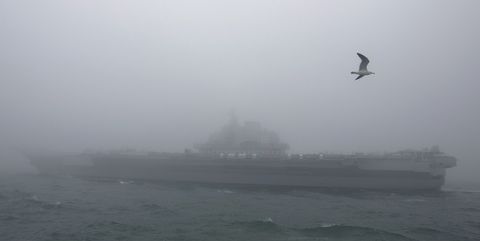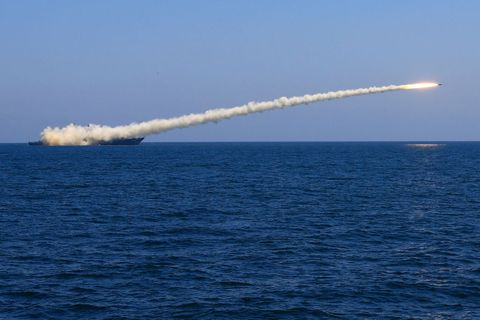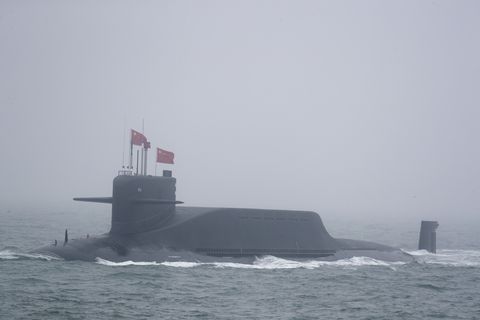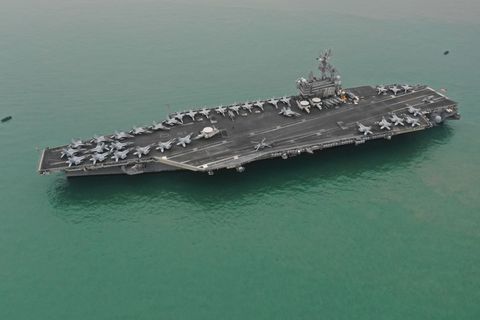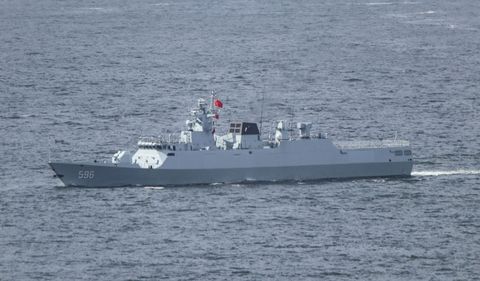https://mil.news.sina.com.cn/china/2019-12-25/doc-iihnzhfz8156167.shtml
美报告:中国海军舰艇数量世界第一 比美军还多49艘
2019年12月25日 10:08 环球时报
0
美国海军研究协会网站23日刊发了美国国会最新报告,详细介绍中国海军近年来的巨大变化, 在详细列举了中国海军的高速发展成果后,该报告将注意力集中到中美海军的对比上。“中国海军已成为该地区最大的海上力量,拥有超过300艘水面战斗舰艇、潜艇、两栖舰艇和特种平台。到2019年,中国海军拥有4艘战略核潜艇、6艘攻击核潜艇、50艘常规潜艇、1艘航母(未列入刚服役的山东舰)、33艘驱逐舰、54艘护卫舰、42艘巡逻舰、86艘近岸导弹艇、59艘两栖舰艇,总数为335艘,这还不算军辅船、保障舰艇以及隶属海警的248艘舰艇”。
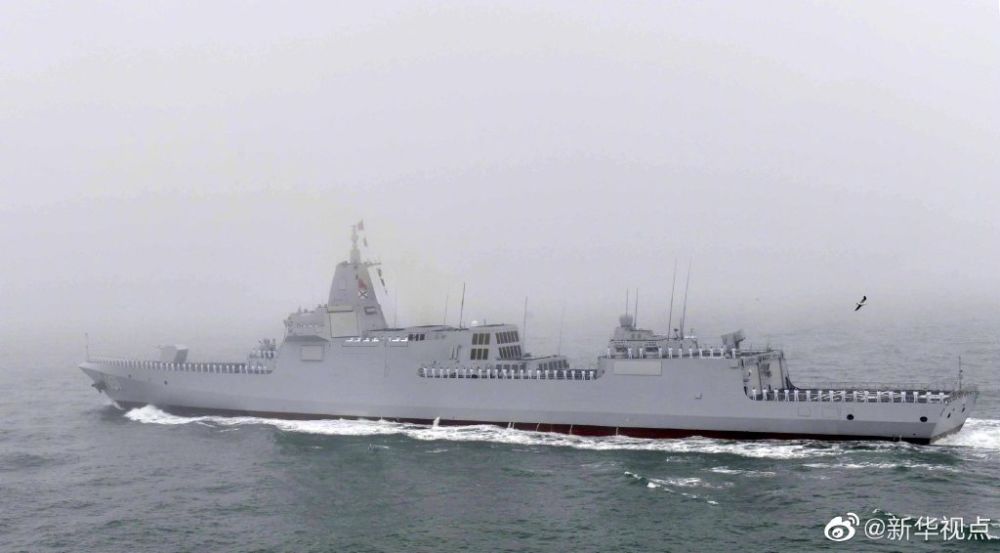
作为对比,2019年美国海军拥有286艘各类舰艇,其中包括支援保障舰船,但没有统计巡逻艇。“2019年的这个数字比中国少了49艘。而在2005年,美国海军舰艇总数比中国多出75艘”。报告焦虑地表示,从2005年开始,中国海军舰艇数量逐年递增,而美国海军舰艇数量基本保持280艘左右。
报告提到,中美海军的实力不能只是简单地对比舰艇数量,但它的确大致体现中美海军的力量变化趋势。如果详细探讨两国海军新增舰艇会发现,美国海军新旧舰艇采用“一对一”的交接模式,中国海军不但正用新锐大型舰艇快速取代老式小型舰艇,例如中国潜艇部队规模虽然基本不变,但现代化程度已大幅提升,而且在此基础上,中国海军驱逐舰总数新增12艘、护卫舰增加11艘、两栖舰艇增加17艘,这些新增舰艇很大程度上改变了中国海军的舰艇组成结构。
https://mil.news.sina.com.cn/china/2019-12-25/doc-iihnzahi9814488.shtml


新浪军事 > 中国军情>正文
美国会报告:中国正建造第3艘航母 第4艘2年内开工
2019年12月25日 10:04 环球时报
0
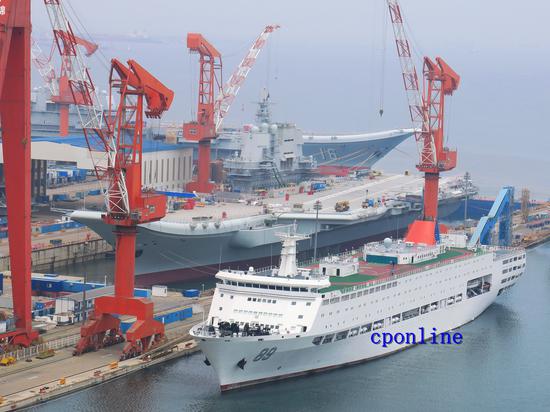
美国海军研究协会网站23日刊发了美国国会最新报告,详细介绍中国海军近年来的巨大变化,并宣称“中国海军成为美国海军在西太平洋上的最主要挑战”。
这份国会报告详细介绍了中国海军现代化的最新成果,包括反舰弹道导弹、反舰巡航导弹、潜艇、水面舰艇、飞机、无人平台等。其中重点介绍的第一种中国新型武器是反舰弹道导弹,这也体现出美国对这种武器的高度关注。除了之前备受关注的“东风-21D”和“东风-26”反舰弹道导弹外,报告还提到“中国正在发展高超音速滑翔器,如果将其综合到反舰弹道导弹中,中国反舰弹道导弹将更难以拦截”。报告同时还提到“鹰击-18”反舰巡航导弹,称装备这类远程打击武器的中国舰艇数量远超美国海军。
报告重点提及的第二种武器是潜艇。预计2020年中国将拥有65艘到70艘各类潜艇,包括最先进的“元”级常规潜艇、“商”级攻击核潜艇与“晋”级战略核潜艇。其中“晋”级战略核潜艇可携带12枚“巨浪-2”潜射导弹,更先进的“巨浪-3”导弹也在研制中。
在航母方面,报告称,除了2012年服役的中国首艘航母辽宁舰、今年12月17日入列的国产航母山东舰外,“中国第三艘航母正在建造中,第四艘航母最早将于2021年开建。这两艘航母仍采用常规动力,但中国未来或将发展核航母”。报告还详细列举了解放军055型大型驱逐舰、新型护卫舰和两栖攻击舰的快速发展。正是依托这些新型舰艇,“中国海军在过去30个月的远洋部署次数,超过了过去30年之和”。
关键字 : 中国航母
我要反馈
https://mil.news.sina.com.cn/china/2019-12-25/doc-iihnzhfz8156167.shtml
US report: China has the largest number of naval vessels in the world, 49 more than US forces
December 25, 2019 10:08 Global Times
0
The website of the United States Naval Research Association published the latest report of the US Congress on the 23rd, detailing the great changes in the Chinese navy in recent years. After enumerating the high-speed development achievements of the Chinese navy in detail, the report focused on the comparison between the Chinese and US navies. "The Chinese Navy has become the region's largest maritime force, with more than 300 surface combat ships, submarines, amphibious ships and special platforms. By 2019, the Chinese Navy has 4 strategic nuclear submarines, 6 attack nuclear submarines, 50 conventional submarines, 1 aircraft carrier (not included in the newly-launched Shandong ship), 33 destroyers, 54 frigates, 42 patrol ships, 86 near-shore missile boats, 59 amphibious ships, a total of 335, which is not counted as auxiliary Ships, support ships, and 248 ships belonging to the Maritime Police. "
For comparison, in 2019, the US Navy has 286 ships of various types, including support and support ships, but no statistical patrol boats. "This number is 49 fewer than China in 2019. In 2005, the total number of US Navy ships was 75 more than China." The report said anxiously that since 2005, the number of Chinese naval vessels has increased year by year, while the number of US naval vessels has remained basically around 280.
The report mentions that the strength of the Chinese and American navy cannot simply be compared with the number of ships, but it does reflect the changing trend of the strength of the Chinese and American navy. If we discuss in detail the new ships of the navies of the two countries, we will find that the new and old ships of the US Navy adopt a "one-on-one" transfer model. The Chinese Navy is not only replacing old-fashioned small ships with new large-scale ships. However, the degree of modernization has been greatly improved, and on this basis, the total number of Chinese navy destroyers has increased by 12, the number of frigates has increased by 11, and the number of amphibious ships has increased by 17, these new ships have largely changed the structure of the Chinese Navy's ships.
https://mil.news.sina.com.cn/china/2019-12-25/doc-iihnzahi9814488.shtml
Sina News Client Sina News Client
Sina Military> Chinese Military Intelligence> Text
US meeting reports: China is building the third aircraft carrier
December 25, 2019 10:04 Global Times
0
The US Naval Research Association website published the latest report of the US Congress on the 23rd, detailing the great changes in the Chinese Navy in recent years, and proclaiming that "the Chinese Navy has become the most important challenge for the US Navy in the Western Pacific.
This congressional report details the latest achievements of the modernization of the Chinese Navy, including anti-ship ballistic missiles, anti-ship cruise missiles, submarines, surface ships, aircraft, and unmanned platforms. The first new type of Chinese weapon that was highlighted was the anti-ship ballistic missile, which also reflects the United States' high attention to this weapon. In addition to the "Dongfeng-21D" and "Dongfeng-26" anti-ship ballistic missiles that have received much attention before, the report also mentioned that "China is developing a hypersonic glider. If it is integrated into anti-ship ballistic missiles, Chinese anti-ships Ballistic missiles will be more difficult to intercept. " The report also mentions the "Eagle Strike-18" anti-ship cruise missile, saying that the number of Chinese ships equipped with such long-range strike weapons far exceeds the US Navy.
The second weapon highlighted in the report is the submarine. It is estimated that China will have 65 to 70 submarines of various types in 2020, including the most advanced "Yuan" class conventional submarines, "Shang" class attack nuclear submarines and "Jin" class strategic nuclear submarines. Among them, the "Jin" class strategic nuclear submarine can carry 12 "Julang-2" submarine-launched missiles, and the more advanced "Julang-3" missile is also under development.
In terms of aircraft carriers, the report states that in addition to China ’s first aircraft carrier Liaoning, which was commissioned in 2012, and the domestic aircraft carrier Shandong, which was listed on December 17, this year, “China ’s third aircraft carrier is under construction, and the fourth aircraft carrier will soon Construction will start in 2021. These two carriers will still use conventional power, but China may develop nuclear carriers in the future. " The report also detailed the rapid development of the PLA 055 large destroyer, new frigates and amphibious assault ships. Relying on these new ships, "the number of ocean deployments by the Chinese Navy in the past 30 months exceeds the sum of the past 30 years."
Keywords: Chinese aircraft carrier
I want feedback
美报告:中国海军舰艇数量世界第一 比美军还多49艘
2019年12月25日 10:08 环球时报
0
美国海军研究协会网站23日刊发了美国国会最新报告,详细介绍中国海军近年来的巨大变化, 在详细列举了中国海军的高速发展成果后,该报告将注意力集中到中美海军的对比上。“中国海军已成为该地区最大的海上力量,拥有超过300艘水面战斗舰艇、潜艇、两栖舰艇和特种平台。到2019年,中国海军拥有4艘战略核潜艇、6艘攻击核潜艇、50艘常规潜艇、1艘航母(未列入刚服役的山东舰)、33艘驱逐舰、54艘护卫舰、42艘巡逻舰、86艘近岸导弹艇、59艘两栖舰艇,总数为335艘,这还不算军辅船、保障舰艇以及隶属海警的248艘舰艇”。

作为对比,2019年美国海军拥有286艘各类舰艇,其中包括支援保障舰船,但没有统计巡逻艇。“2019年的这个数字比中国少了49艘。而在2005年,美国海军舰艇总数比中国多出75艘”。报告焦虑地表示,从2005年开始,中国海军舰艇数量逐年递增,而美国海军舰艇数量基本保持280艘左右。
报告提到,中美海军的实力不能只是简单地对比舰艇数量,但它的确大致体现中美海军的力量变化趋势。如果详细探讨两国海军新增舰艇会发现,美国海军新旧舰艇采用“一对一”的交接模式,中国海军不但正用新锐大型舰艇快速取代老式小型舰艇,例如中国潜艇部队规模虽然基本不变,但现代化程度已大幅提升,而且在此基础上,中国海军驱逐舰总数新增12艘、护卫舰增加11艘、两栖舰艇增加17艘,这些新增舰艇很大程度上改变了中国海军的舰艇组成结构。
https://mil.news.sina.com.cn/china/2019-12-25/doc-iihnzahi9814488.shtml


新浪军事 > 中国军情>正文
美国会报告:中国正建造第3艘航母 第4艘2年内开工
2019年12月25日 10:04 环球时报
0

美国海军研究协会网站23日刊发了美国国会最新报告,详细介绍中国海军近年来的巨大变化,并宣称“中国海军成为美国海军在西太平洋上的最主要挑战”。
这份国会报告详细介绍了中国海军现代化的最新成果,包括反舰弹道导弹、反舰巡航导弹、潜艇、水面舰艇、飞机、无人平台等。其中重点介绍的第一种中国新型武器是反舰弹道导弹,这也体现出美国对这种武器的高度关注。除了之前备受关注的“东风-21D”和“东风-26”反舰弹道导弹外,报告还提到“中国正在发展高超音速滑翔器,如果将其综合到反舰弹道导弹中,中国反舰弹道导弹将更难以拦截”。报告同时还提到“鹰击-18”反舰巡航导弹,称装备这类远程打击武器的中国舰艇数量远超美国海军。
报告重点提及的第二种武器是潜艇。预计2020年中国将拥有65艘到70艘各类潜艇,包括最先进的“元”级常规潜艇、“商”级攻击核潜艇与“晋”级战略核潜艇。其中“晋”级战略核潜艇可携带12枚“巨浪-2”潜射导弹,更先进的“巨浪-3”导弹也在研制中。
在航母方面,报告称,除了2012年服役的中国首艘航母辽宁舰、今年12月17日入列的国产航母山东舰外,“中国第三艘航母正在建造中,第四艘航母最早将于2021年开建。这两艘航母仍采用常规动力,但中国未来或将发展核航母”。报告还详细列举了解放军055型大型驱逐舰、新型护卫舰和两栖攻击舰的快速发展。正是依托这些新型舰艇,“中国海军在过去30个月的远洋部署次数,超过了过去30年之和”。
关键字 : 中国航母
我要反馈
https://mil.news.sina.com.cn/china/2019-12-25/doc-iihnzhfz8156167.shtml
US report: China has the largest number of naval vessels in the world, 49 more than US forces
December 25, 2019 10:08 Global Times
0
The website of the United States Naval Research Association published the latest report of the US Congress on the 23rd, detailing the great changes in the Chinese navy in recent years. After enumerating the high-speed development achievements of the Chinese navy in detail, the report focused on the comparison between the Chinese and US navies. "The Chinese Navy has become the region's largest maritime force, with more than 300 surface combat ships, submarines, amphibious ships and special platforms. By 2019, the Chinese Navy has 4 strategic nuclear submarines, 6 attack nuclear submarines, 50 conventional submarines, 1 aircraft carrier (not included in the newly-launched Shandong ship), 33 destroyers, 54 frigates, 42 patrol ships, 86 near-shore missile boats, 59 amphibious ships, a total of 335, which is not counted as auxiliary Ships, support ships, and 248 ships belonging to the Maritime Police. "
For comparison, in 2019, the US Navy has 286 ships of various types, including support and support ships, but no statistical patrol boats. "This number is 49 fewer than China in 2019. In 2005, the total number of US Navy ships was 75 more than China." The report said anxiously that since 2005, the number of Chinese naval vessels has increased year by year, while the number of US naval vessels has remained basically around 280.
The report mentions that the strength of the Chinese and American navy cannot simply be compared with the number of ships, but it does reflect the changing trend of the strength of the Chinese and American navy. If we discuss in detail the new ships of the navies of the two countries, we will find that the new and old ships of the US Navy adopt a "one-on-one" transfer model. The Chinese Navy is not only replacing old-fashioned small ships with new large-scale ships. However, the degree of modernization has been greatly improved, and on this basis, the total number of Chinese navy destroyers has increased by 12, the number of frigates has increased by 11, and the number of amphibious ships has increased by 17, these new ships have largely changed the structure of the Chinese Navy's ships.
https://mil.news.sina.com.cn/china/2019-12-25/doc-iihnzahi9814488.shtml
Sina News Client Sina News Client
Sina Military> Chinese Military Intelligence> Text
US meeting reports: China is building the third aircraft carrier
December 25, 2019 10:04 Global Times
0
The US Naval Research Association website published the latest report of the US Congress on the 23rd, detailing the great changes in the Chinese Navy in recent years, and proclaiming that "the Chinese Navy has become the most important challenge for the US Navy in the Western Pacific.
This congressional report details the latest achievements of the modernization of the Chinese Navy, including anti-ship ballistic missiles, anti-ship cruise missiles, submarines, surface ships, aircraft, and unmanned platforms. The first new type of Chinese weapon that was highlighted was the anti-ship ballistic missile, which also reflects the United States' high attention to this weapon. In addition to the "Dongfeng-21D" and "Dongfeng-26" anti-ship ballistic missiles that have received much attention before, the report also mentioned that "China is developing a hypersonic glider. If it is integrated into anti-ship ballistic missiles, Chinese anti-ships Ballistic missiles will be more difficult to intercept. " The report also mentions the "Eagle Strike-18" anti-ship cruise missile, saying that the number of Chinese ships equipped with such long-range strike weapons far exceeds the US Navy.
The second weapon highlighted in the report is the submarine. It is estimated that China will have 65 to 70 submarines of various types in 2020, including the most advanced "Yuan" class conventional submarines, "Shang" class attack nuclear submarines and "Jin" class strategic nuclear submarines. Among them, the "Jin" class strategic nuclear submarine can carry 12 "Julang-2" submarine-launched missiles, and the more advanced "Julang-3" missile is also under development.
In terms of aircraft carriers, the report states that in addition to China ’s first aircraft carrier Liaoning, which was commissioned in 2012, and the domestic aircraft carrier Shandong, which was listed on December 17, this year, “China ’s third aircraft carrier is under construction, and the fourth aircraft carrier will soon Construction will start in 2021. These two carriers will still use conventional power, but China may develop nuclear carriers in the future. " The report also detailed the rapid development of the PLA 055 large destroyer, new frigates and amphibious assault ships. Relying on these new ships, "the number of ocean deployments by the Chinese Navy in the past 30 months exceeds the sum of the past 30 years."
Keywords: Chinese aircraft carrier
I want feedback
































